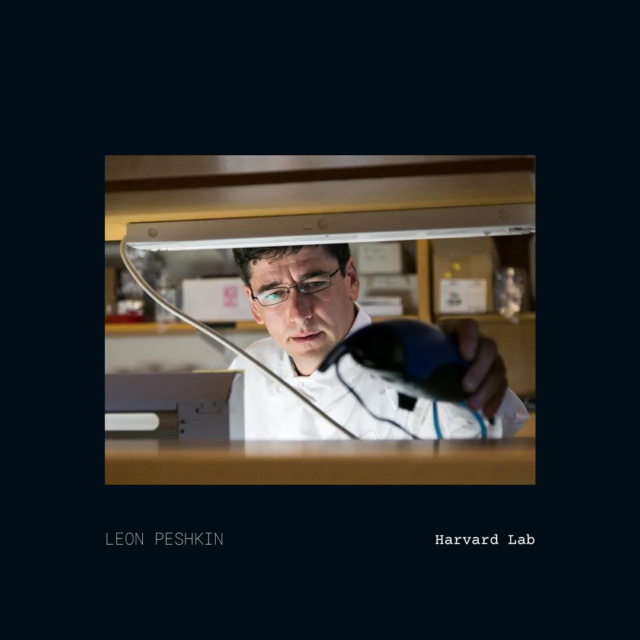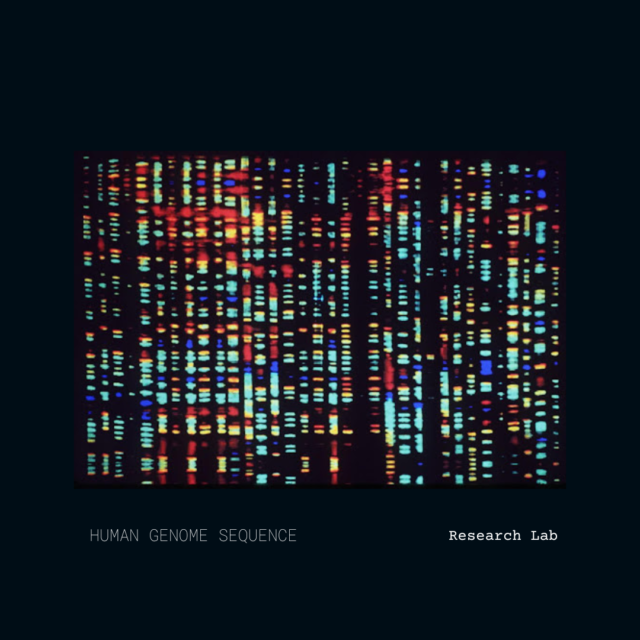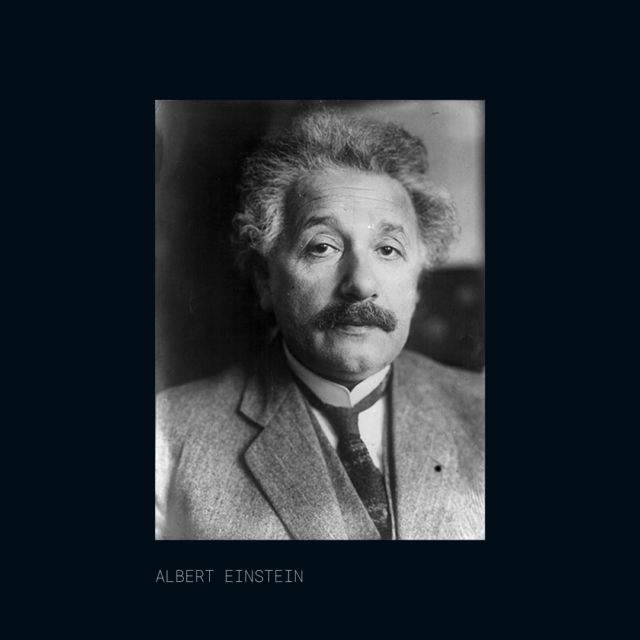What if I told you the key to igniting your ambition lies not just in what you dream about, but in how big you dare to dream?
In this post, I explore the power of audacious dreams, sparked by a chance encounter with the most unique person in the whole wide world, who's working on something truly mind-blowing. His story, along with a 5-step framework I developed, will guide you on a journey to craft big, bold dreams that will propel you forward in your career and beyond.
A Chance Encounter at Harvard
My favorite engagement this year has been piloting a leadership coaching program with the Entrepreneurship Hub at Wolfson College, Cambridge. What a joy it is to serve as a companion and champion of untapped potential for greatness.
During a trip to Harvard with one of my students, we stumbled upon Leon Peshkin in a hotel lobby. People, people, are just people. But Leon? Meeting him was like meeting a science experiment – a man with enough data on himself to create a personal army of Leons. Seriously, it turns out, he's the only human whose entire genome has been sequenced, basically meaning they could clone him now, next week, or even a thousand years from now.
If you think this is crazy, out of this world, get this. Leon’s genome was sent to space. In 2015, his genome was part of a NASA project where it was included in a time capsule sent aboard a spacecraft. This initiative aimed to preserve human genetic information for future extraterrestrial exploration and potential contact. So, if aliens ever get curious about us, they might just come across a detailed blueprint of Leon’s DNA and colonize an entire planet with Leons!

I thought I’d encountered my fair share of extraordinary individuals, but my newly made friend was something else. But hold on a minute. Is he really that big of a deal for donating himself to a scientific project? I did not expect him to drop another bombshell: he’s not just the subject of the greatest human scientific project, he’s a scientist himself. And not just any scientist – he’s working at a Harvard lab to double the human lifespan. If that isn’t a colossal dream, I don’t know what is. I was left completely speechless. I had never met anyone whose ambitions eclipsed my own.

That night, one question kept haunting me: How big should we dream? Is there a limit to the scale of our ambitions, or are we free to envision the seemingly impossible? In other words, can we shoot for the stars?
I have a theory that whenever one of us aims for the stars, we're met with skepticism and ridicule from those around us.
Take Einstein's theory of relativity, for example. It was like trying to explain quantum physics to a caveman. The scientific community said, "Wait, what? Time can bend? And space can warp?" This disbelief stemmed from the counterintuitive nature of Einstein's ideas, which challenged the established Newtonian framework of physics (Brush, 1999; Coles, 2019). Even scientists, like the rest of us, tend to cling to familiar beliefs, turning them into dogmas and saying to contradictory ideas, “That’s blasphemy!”
How do you ever know for certain that something is true? Einstein's theory gained widespread acceptance in 1919 when Arthur Eddington's solar eclipse expedition confirmed that light bends around massive objects, just as Einstein had predicted. This real-world proof gave the general theory of relativity the credibility it needed to be taken seriously.

The groundbreaking work of James Watson and Francis Crick, who proposed the double helix structure of DNA, was marked by similar skepticism and scrutiny from the scientific community.
Part of the problem was that other scientists were also in the race to figure out DNA's structure. There was a lot of competition, and some people got a bit territorial (Maddox, 2003; McGuffin & Southwick, 2003). Sounds familiar to situations you've encountered in your professional life? Plus, the double helix model was such a radical departure from previous understandings of nucleic acid structures that it took scientists a while to wrap their heads around it.

It hit me as I’m writing this: Leon's crazy space dream wouldn't have been possible without those of Einstein and Watson & Crick! I mean, how else could we have shot his DNA off into the cosmos?
The lesson for dreamers like us is that big dreams often build on other big dreams. And if there are no skeptics raising their eyebrows, it might be a sign that we're not dreaming big enough.
And here’s another thing: when the world looks at us with skepticism and ridicule, it's usually because they're stuck in their old ways and afraid of themselves looking ordinary. Don't let their negativity hold you back. Listen to the visionaries like Einstein, Watson & Crick, and Leon. Aim for the stars. Double your lifespan. Send your DNA to Mars.
Perhaps your dream isn't about interstellar genetics, and maybe your grades don’t quite measure up to Einstein’s (but that’s not a valid excuse—Einstein had his own academic struggles). Maybe when you vocalize your dreams, others laugh. No one believes in you, and the world doesn’t think you’re worthy of your dreams. All you have is your imagination, or whatever is left of it, fighting against the pulse of self-doubt inside of you.
You don’t have to be Einstein. You don’t need anyone’s approval. All you need is your own. Give yourself permission to believe in yourself. Remember, the dreams we dare to dream today are the realities upon which future generations will build their dreams.
Here are 5-Steps to Dream Big:
To guide you on the journey of your biggest dreams, here’s a powerful 5-step framework.

Investigate
Dive deep into trends, theories, and emerging technologies in your industry that could shape your vision. Look to the pioneers who have already succeeded—what strategies and steps did they take? How did they fail and fight to persevere? Learn from their ways of being.

Interpret
Once you've done your investigation, it’s time to connect the dots. Analyze the trends, theories, and technologies you’ve explored, along with the insights you’ve gained from studying industry titans. What patterns are emerging? What ideas or ideals begin to stand out? This is where your dream starts to take shape—at the crossroads of the past and your alternative futures, where what was meets what can be.

Imagine
Now, unleash your imagination! Look at your ideal future self. Who do you see? Don’t focus your imaginative energy on a project or a process—those are ephemeral, like the waves of the ocean. Focus on who you are to yourself and others. Everything else is secondary. How is the world better because your dream is realized?

Integrate
Come back to the present and turn your dream into a roadmap from who you are now to who you are going to be. This is your strategic plan—back-casting from your ideal future and integrating your new awareness into present reality. What resources or relationships do you need for this journey? What do you need to stop doing, shift doing, and start doing?

Invest
This is where the investment comes in. Invest your time, talent, and treasure in your dream. You might not have access to all of these at the same time, but you are clear about what you believe. You believe in yourself. Live your values. Learn to fall and rise. Listen to those in your future, and help them build their dreams on yours.
So, what are you waiting for?
I have a dream that this post inspired your dream to become a Leon, an Einstein, a Watson & Crick.
References
Brush, S. G. (1999). Why was relativity accepted? Physics in Perspective, 1(2), 184-214.
Coles, P. (2019). Einstein, Eddington, and the 1919 eclipse. Nature, 568(7752), 306-307.
Maddox, B. (2003). The double helix and the 'wronged heroine.' Nature, 421(6921), 407-408.
